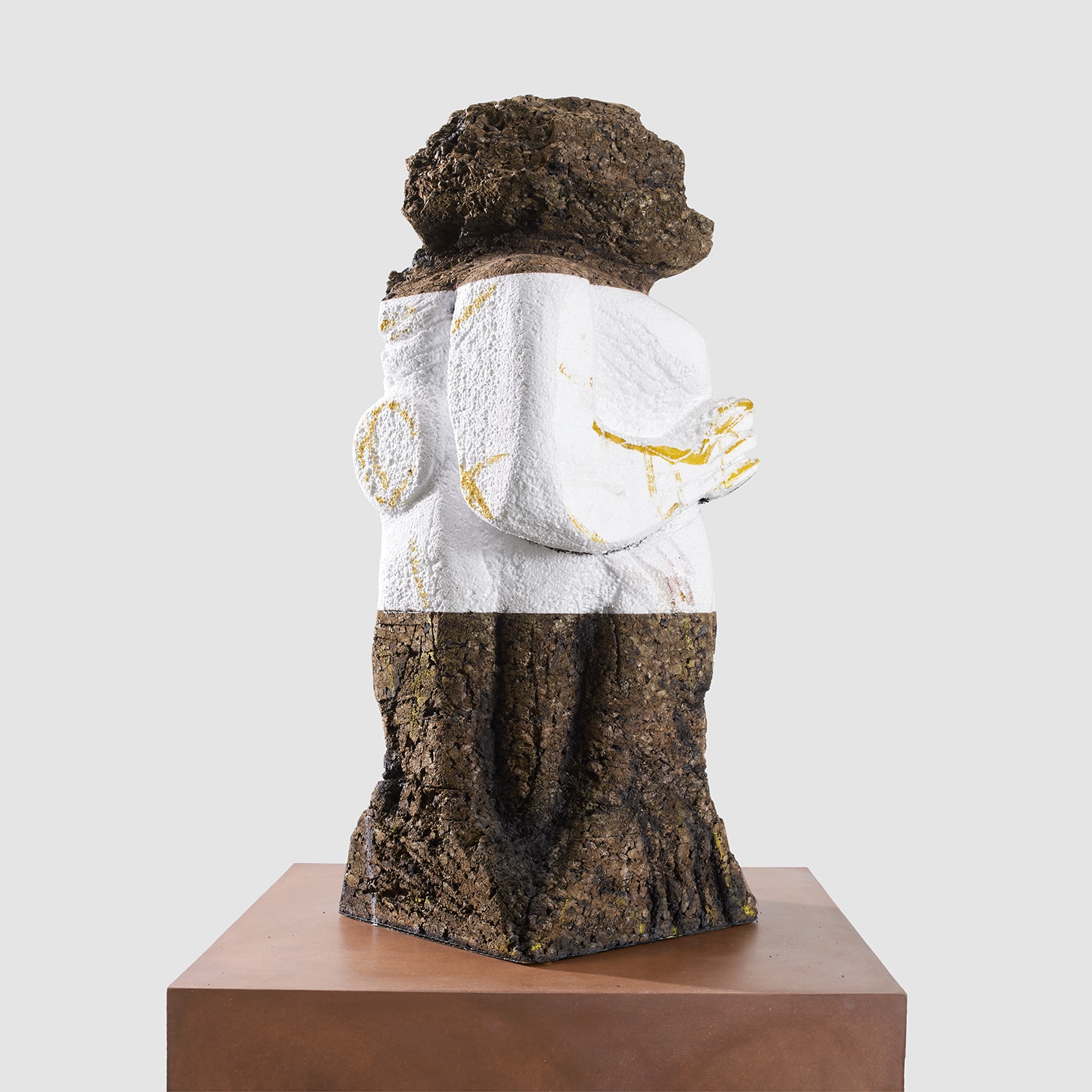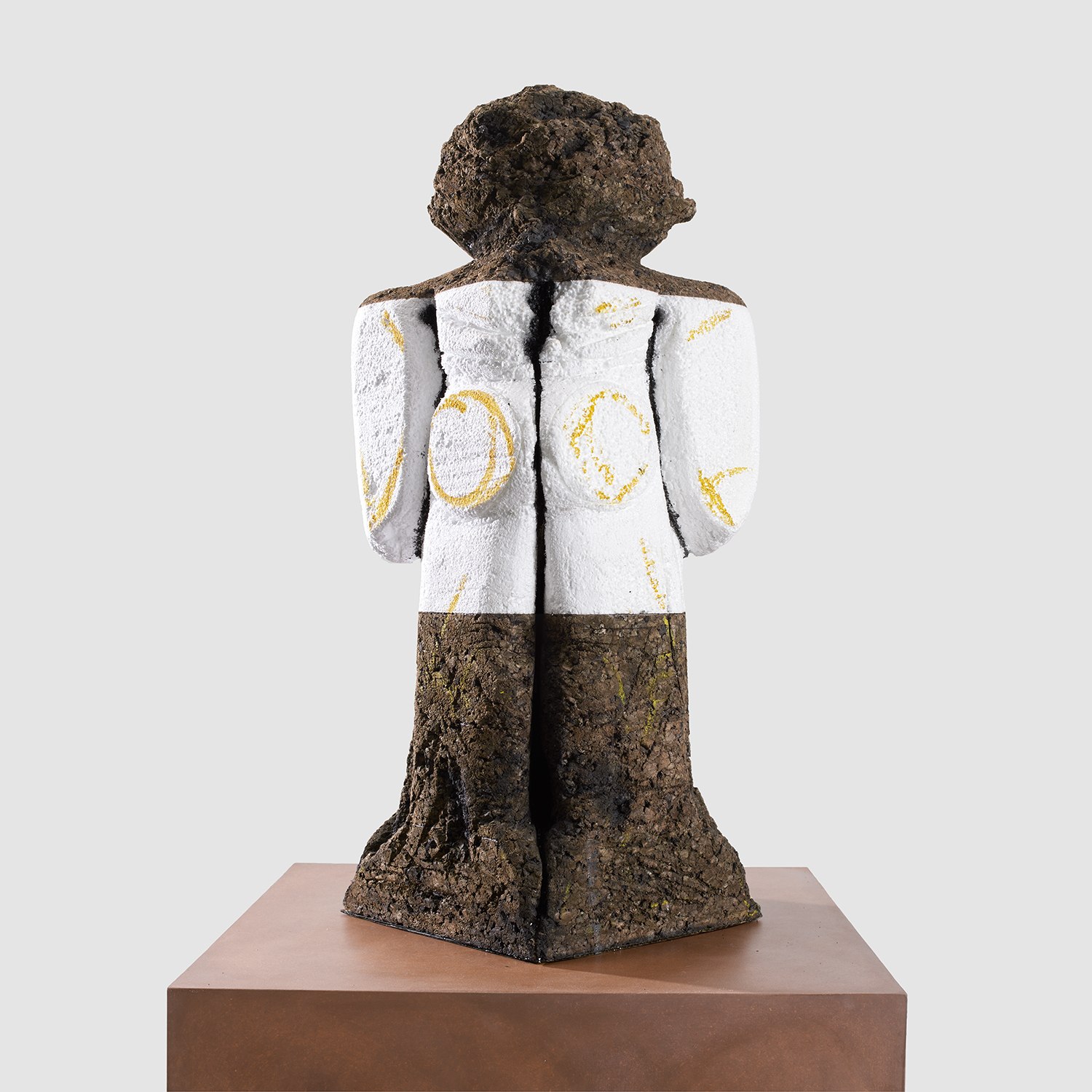





4
Huma Bhabha
Baalbek
signed, titled and dated 'HUMA BHABHA 'BAALBEK' 2021' on the underside of the figure
cork, Styrofoam, cardboard, acrylic and oilstick on wood, on artist's plinth
figure: 81 x 41.3 x 40.5 cm (31 7/8 x 16 1/4 x 15 7/8 in.)
overall:162.9 x 61.1 x 61.1 cm (64 1/8 x 24 x 24 in.)
overall:162.9 x 61.1 x 61.1 cm (64 1/8 x 24 x 24 in.)
Executed in 2021.